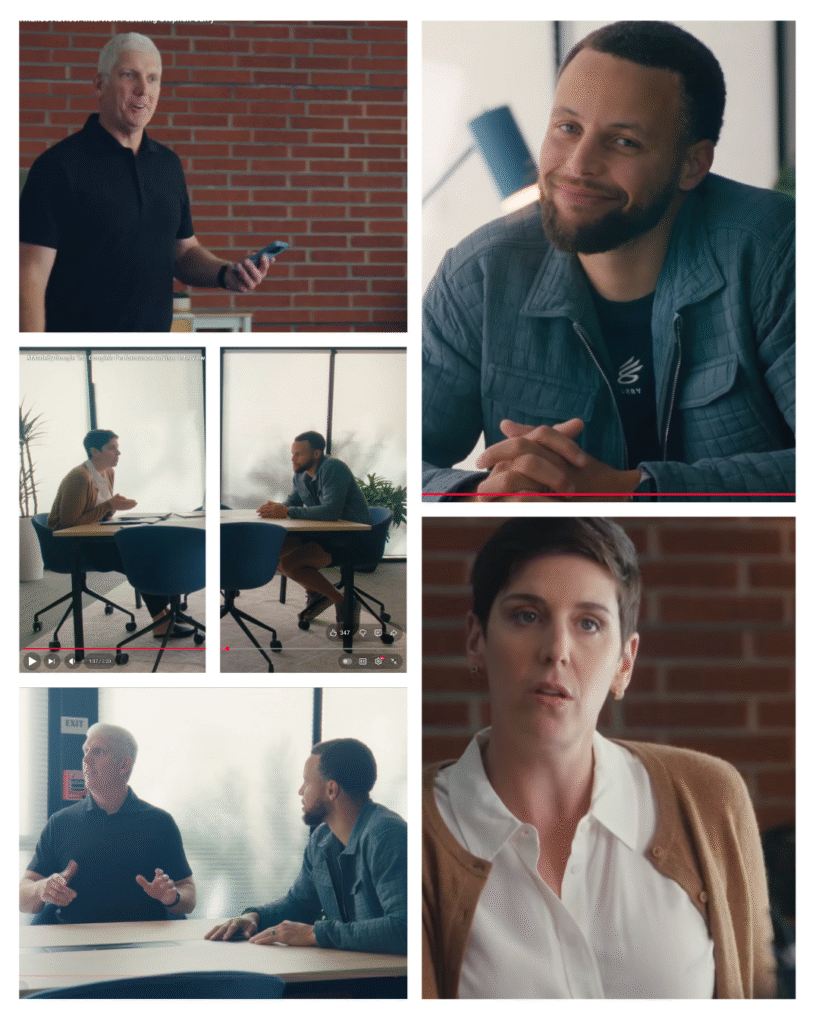
Stephen Curry’s mock interview for Google’s “Performance Advisor” position represents more than marketing theatre—it’s a carefully orchestrated introduction to what Google describes as a “long-term partnership spanning Google Health, Google Pixel and Google Cloud”. The campaign succeeds brilliantly in some areas whilst revealing strategic blind spots that deserve scrutiny from marketing professionals seeking to understand the evolution of celebrity partnerships in the AI era.
What Google Got Right: The Art of Disarming Authenticity
The campaign’s masterstroke lies in its self-aware humour. Rather than the typical tech advertisement’s breathless optimism about revolutionary features, Google opted for gentle self-deprecation. Curry’s confusion between “NBA” and “MBA” creates an immediate moment of relatability that pierces through corporate pretension. This approach demonstrates sophisticated understanding of modern audiences’ immunity to overwrought product claims.
The casting choice proves particularly astute when viewed alongside the actual partnership details. Curry’s genuine expertise in performance optimisation—his legendary precision from the three-point line—provides credible authority for health and fitness technology advocacy. Unlike celebrity partnerships that feel manufactured, Google’s official announcement reveals that
“Stephen and his team of experts are working with our health experts and product and AI engineers to test our new products and experiences, giving us incredibly valuable feedback.”
The interview format itself deserves recognition for creating dramatic tension whilst cleverly obscuring the partnership’s actual sophistication. The mock interruption by “Rick” (presumably Rick Osterloh, Google’s Senior VP) adds unexpected levity whilst reinforcing the authenticity of Curry’s “application” process—a narrative device that transforms what could have been straightforward product demonstration into engaging storytelling.
The Performance Advisor Partnership: Substance Behind the Spectacle
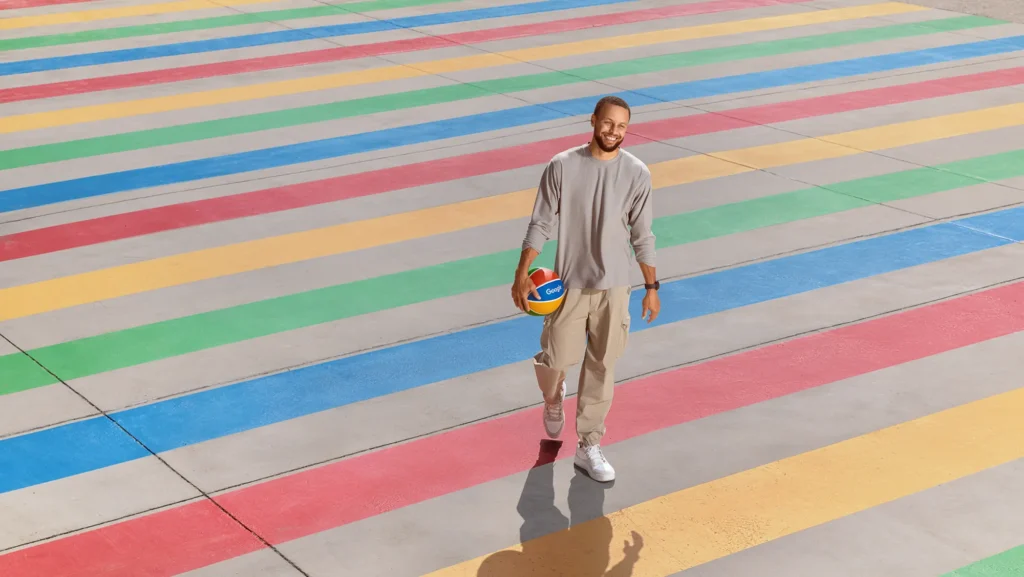
Google’s decision to position Curry as a genuine product collaborator rather than mere spokesperson represents sophisticated evolution beyond traditional celebrity endorsements. The partnership involves actual product testing, feedback provision, and collaborative development—creating what marketing professionals term “co-creation” rather than simple brand ambassadorship.
This approach aligns with research indicating that 73% of consumers now prioritise authenticity when evaluating celebrity endorsements. By positioning Curry as someone who genuinely uses and influences Google’s health technology, the campaign addresses contemporary scepticism towards manufactured celebrity relationships.
The AI Basketball Coach initiative particularly demonstrates this collaborative depth.
Google’s official announcement reveals that the AI Basketball Coach “incorporates Gemini models on Vertex AI and MediaPipe to provide detailed form analysis, visual feedback and personalised coaching tips”.
More significantly, Curry has already implemented the system practically—at Curry Camp, his annual three-day elite basketball training camp, Stephen worked with Google “to bring Google’s AI to life for participants” through interactive demos and challenges.
This represents the kind of genuine product integration that creates lasting brand equity beyond campaign duration. The technology isn’t theoretical—it’s being tested with actual athletes in real training environments.
Strategic Blind Spots: Where the Campaign Undersells Its Own Sophistication
Despite its considerable strengths, the campaign reveals several critical oversights that paradoxically undersell the partnership’s actual depth.
The Technology Demonstration Gap
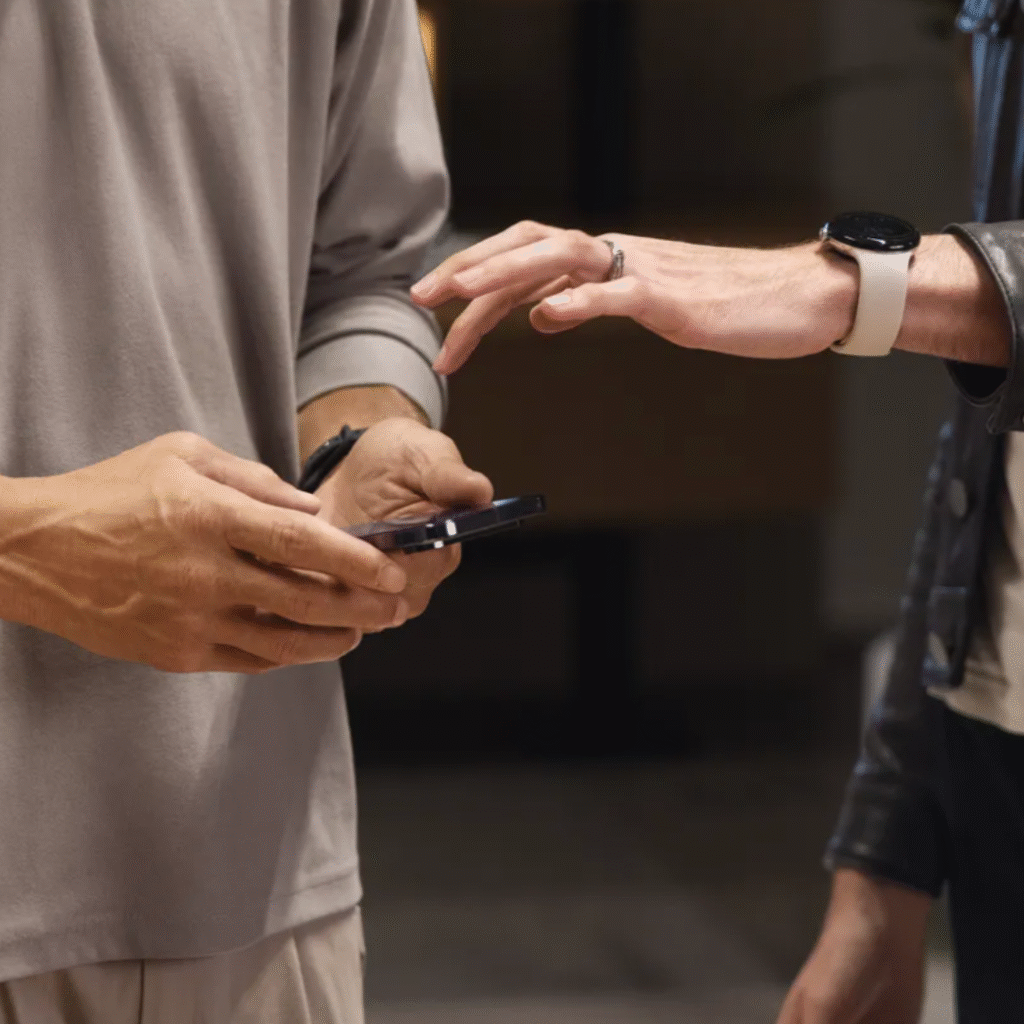
The campaign’s most significant flaw lies in its failure to showcase the partnership’s genuine technological sophistication.
Whilst the mock interview format creates engaging entertainment, it barely hints at the advanced AI capabilities already deployed. Google’s AI Basketball Coach uses “Gemini 2.5 Pro” and incorporates cutting-edge computer vision technology—yet the campaign provides no concrete demonstration of these capabilities.
The official partnership involves AI insights that “help analyze shot quality, sharpen workout strategy and continue to develop as a player”, yet audiences learn none of this from the campaign itself. This represents a profound missed opportunity for a company positioning itself at the forefront of artificial intelligence.
The Authentic Collaboration Paradox
The campaign’s “manufactured spontaneity” actually undermines its most compelling selling point—the genuine nature of the collaboration. The carefully scripted confusion and perfectly timed interruptions risk suggesting that the entire partnership is similarly manufactured, when the reality involves hands-on work where “Stephen and his team of experts are working with our health experts and product and AI engineers”.
Contemporary audiences possess increasingly sophisticated abilities to detect manufactured spontaneity. The campaign’s artificial interview format paradoxically conceals the authentic elements that would have provided stronger persuasive power.
Cultural Localisation Limitations
The campaign’s Western-centric assumptions about celebrity athletics may not translate effectively across Google’s global markets. In regions where basketball holds less cultural significance, Curry’s expertise becomes less compelling as a product differentiator. Given that Google’s health technology aims to serve global audiences, a more sophisticated approach would have acknowledged these cultural variations through localised adaptations.
The Broader Strategic Context: Google’s Celebrity Ecosystem
The Curry partnership forms part of Google’s broader celebrity strategy, including collaborations with Jimmy Fallon, the Jonas Brothers, and Formula 1 driver Lando Norris. This multi-celebrity approach demonstrates strategic understanding that different personalities resonate with distinct demographic segments.
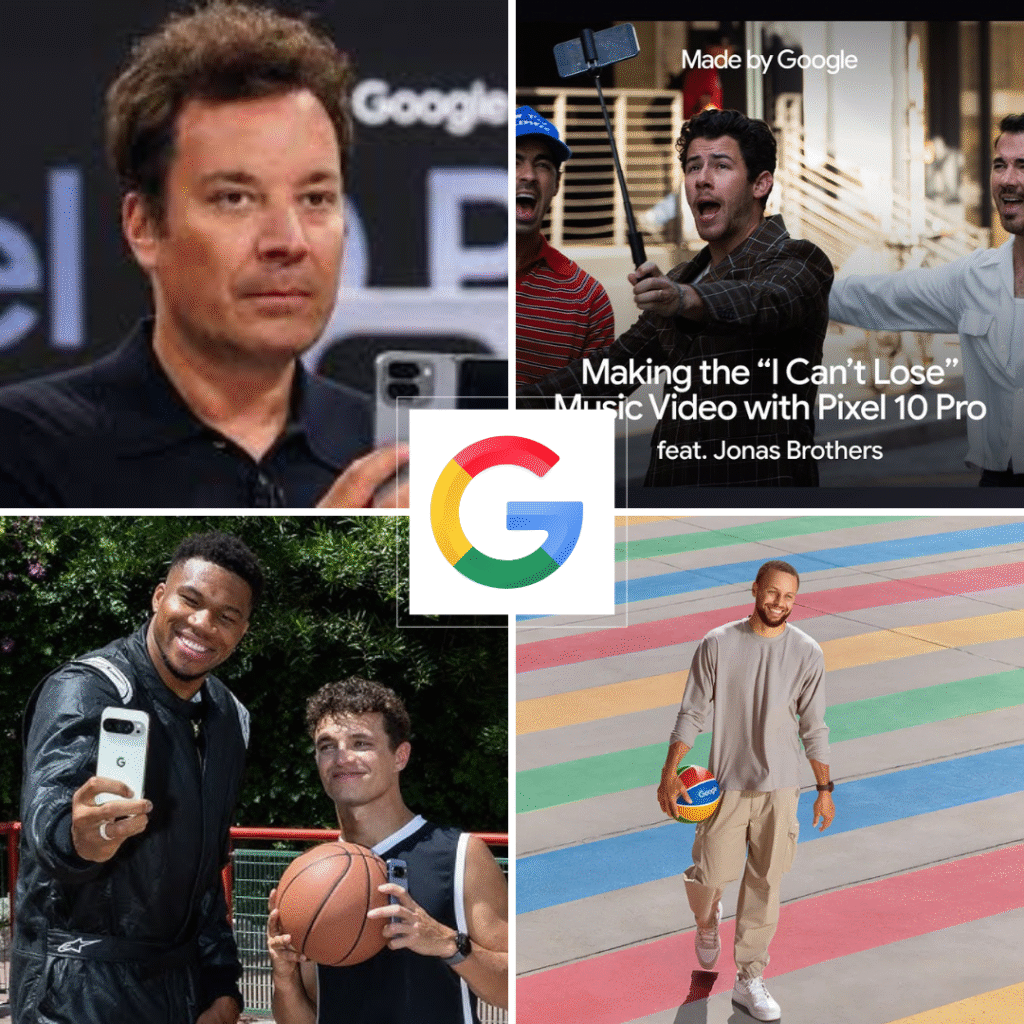
However, this approach risks diluting individual partnerships’ impact. When every celebrity becomes a Google collaborator, the uniqueness of any single relationship diminishes. The Curry campaign might have benefited from clearer differentiation of his specific technological contribution versus other celebrities’ entertainment-focused roles.
What I Would Have Done Differently: A Strategic Redesign
Deeper Technology Integration
Rather than mock interview format, I would have created content demonstrating actual AI technology in action. Show Curry using Google’s Pixel Watch to “monitor his heart rate, sleep patterns and daily activity” and demonstrate how this data integrates with AI coaching recommendations. Display the Basketball Coach AI identifying specific technical improvements in real-time during actual training sessions.
The campaign sits on a goldmine of technological sophistication that remains completely invisible to audiences. Google possesses concrete evidence of AI effectiveness—use it.
Authentic Behind-the-Scenes Documentation
Instead of manufactured interview spontaneity, document genuine collaboration moments. Show Curry providing feedback to Google engineers about device usability. Demonstrate how “Stephen and his team of experts are switching to the entire Pixel portfolio” and reveal specific features that enhance their professional workflow.
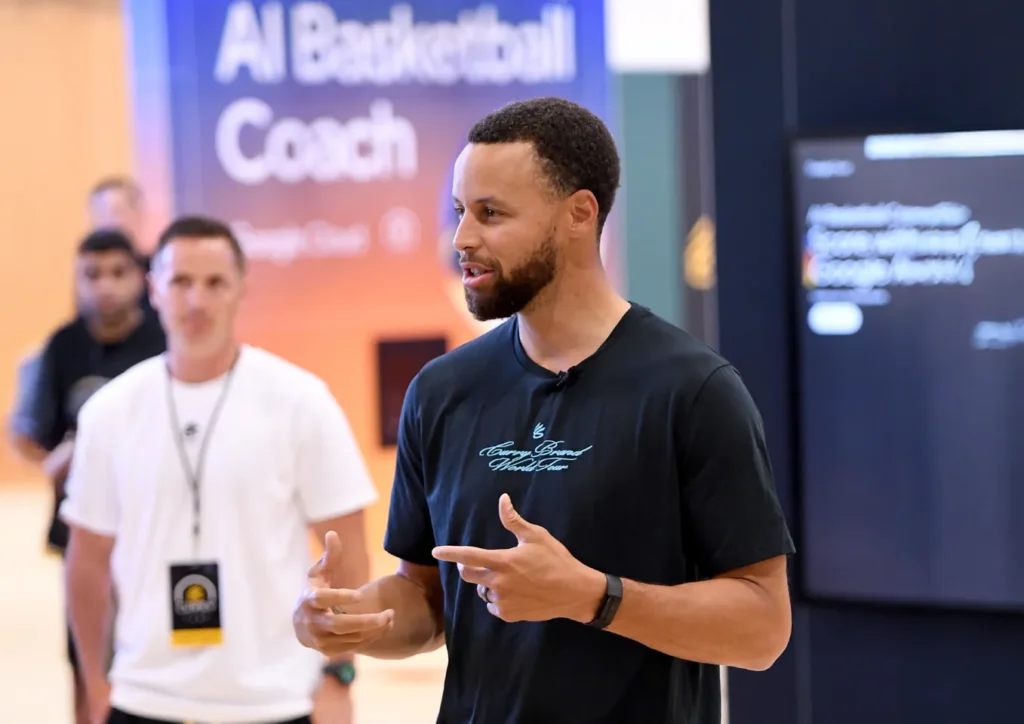
The partnership involves real collaborative development—that authenticity would prove far more compelling than scripted confusion about MBA versus NBA.
Educational Depth Through Practical Application
The campaign could have leveraged Curry Camp’s actual implementation to demonstrate educational value. Show how the AI Basketball Coach helped specific student athletes improve their shooting form. Provide concrete before-and-after examples of performance improvement attributable to AI analysis.
This approach would have transformed abstract AI promises into tangible educational outcomes whilst showcasing the technology’s practical effectiveness.
The Measurement Challenge: Effectiveness Beyond Entertainment
The campaign’s true effectiveness lies not in immediate conversion metrics but in longer-term brand equity development. Celebrity partnerships of this nature succeed by creating positive associations that influence purchasing decisions across extended timeframes.
However, Google faces unique measurement challenges given its diverse product ecosystem. The campaign promotes health and fitness technology, but audiences may associate the positive brand sentiment with other Google products—search, Maps, or Android devices. This halo effect complicates direct attribution whilst potentially providing broader business value.
The real test will emerge when consumers actually interact with Google’s AI health coach and discover whether the underlying technology delivers the performance improvements the partnership promises.
Industry Implications: The Evolution of Celebrity Marketing
Google’s Curry partnership signals broader industry evolution towards collaborative celebrity relationships rather than transactional endorsements. This approach requires significantly greater investment—in time, resources, and strategic planning—but potentially delivers more sustainable competitive advantages.
The success of such partnerships depends heavily on authentic alignment between celebrity expertise and product capabilities. When this alignment exists—as it demonstrably does with Curry’s performance background and Google’s health technology—the partnership creates genuine value for all stakeholders.
The Global Context: Celebrity Partnerships in Digital India
The campaign’s effectiveness within Google’s crucial Indian market deserves particular consideration. India’s celebrity culture operates differently from Western markets, with cricket dominating athletic attention and Bollywood personalities holding significant cultural influence. For deeper insight into how tech companies navigate India’s complex cultural landscape, see analysis of Amazon’s festival marketing approach and smartphone brands’ marketing chaos.
The Curry partnership, whilst globally recognisable, may require supplemental celebrity relationships to achieve maximum Indian market resonance. Google’s success with culturally intelligent campaigns like DigiKavach demonstrates the company’s capacity for local market adaptation when properly executed.
The Technology Paradox: Capabilities Versus Communication
Perhaps the campaign’s most significant oversight involves the disconnect between demonstrated AI capabilities and public communication strategy.
Google possesses concrete evidence of technological sophistication—AI that can analyse shot quality and provide personalised coaching tips using advanced computer vision—yet chooses to focus on entertainment value rather than technical demonstration.
This creates vulnerability if competitors demonstrate more concrete AI capabilities alongside their own celebrity partnerships. When Samsung positions Galaxy devices as “AI-powered” or Apple emphasises machine learning integration, Google’s failure to showcase its superior AI sophistication represents a strategic misstep.
Looking Forward: The Sustainable Partnership Model
The Curry collaboration’s long-term success will depend on sustained innovation rather than initial publicity impact. Can Google continue developing genuinely useful health and fitness technology that justifies Curry’s ongoing involvement? Will the partnership produce measurable performance improvements that validate the collaboration beyond marketing value?
The early signs suggest authentic collaboration potential. Google’s integration of Curry’s feedback into product development and the practical deployment at Curry Camp demonstrate genuine technological application rather than superficial celebrity attachment.
However, sustained value creation requires continued technological development alongside maintained celebrity engagement. The partnership must evolve beyond initial novelty into proven performance enhancement tools that justify their AI coaching claims.
Final Assessment: Underselling Authentic Innovation
Google’s Curry campaign succeeds in creating engaging, culturally intelligent celebrity marketing that transcends traditional endorsement limitations. The self-aware humour, genuine expertise alignment, and collaborative approach represent significant strategic sophistication.
However, the campaign’s failure to demonstrate its most compelling elements—concrete technological capabilities, authentic collaborative development, and proven performance outcomes—reveals strategic blind spots that could have been addressed with more comprehensive planning.
The campaign ultimately succeeds as brand-building exercise whilst missing opportunities for deeper audience engagement and technological demonstration. It represents evolution in celebrity partnership strategy without achieving the revolutionary impact Google’s actual technological capabilities and authentic collaboration model should have enabled.
For marketing professionals, the campaign offers valuable lessons about the gap between authentic innovation and public communication strategy. The most sophisticated celebrity partnerships risk invisibility if campaigns prioritise entertainment over substance demonstration.
The true measure of success will emerge not in immediate campaign metrics but in whether this collaboration produces genuine technological innovations that enhance users’ health and fitness outcomes—the ultimate validation of any performance advisor’s worth. Based on the partnership’s actual depth and technological sophistication, Google possesses the foundation for remarkable success if future communications match the substance of their collaboration.
For related analysis on celebrity partnerships and marketing strategy, see:
- The September Siege: When Smartphone Brands Lost Their Collective Sanity
- Samsung India’s Campaign Analysis
- Google DigiKavach Campaign Analysis
